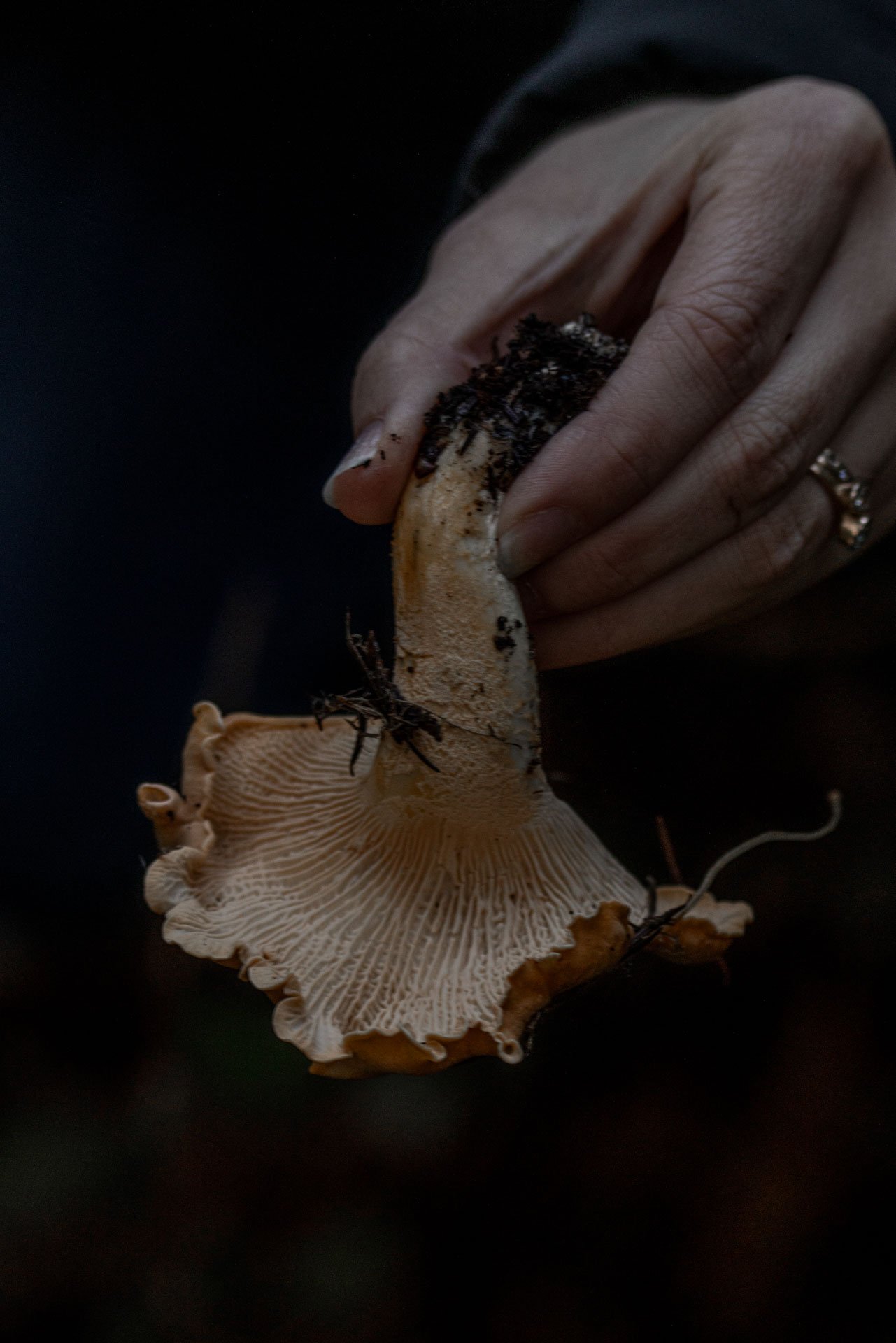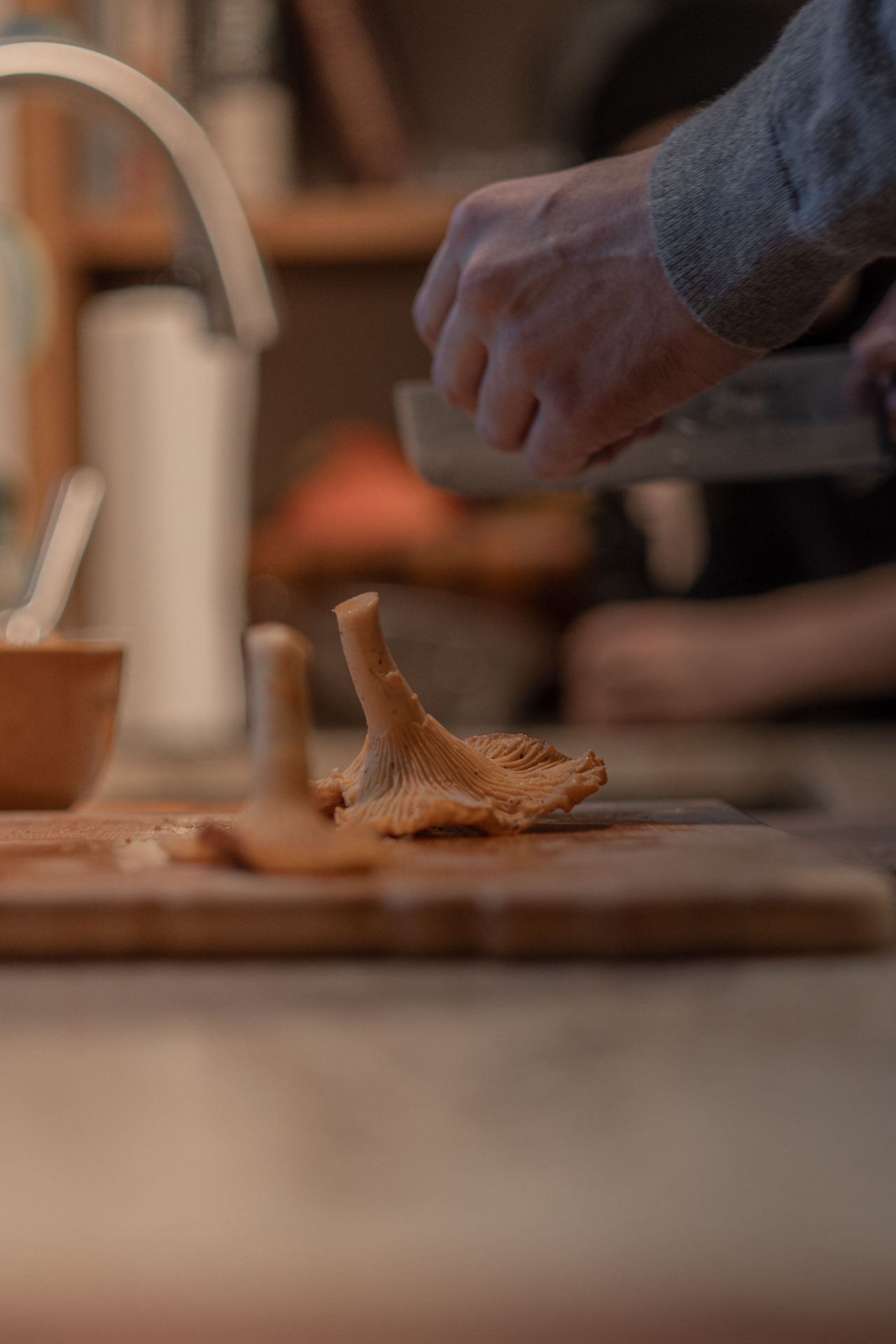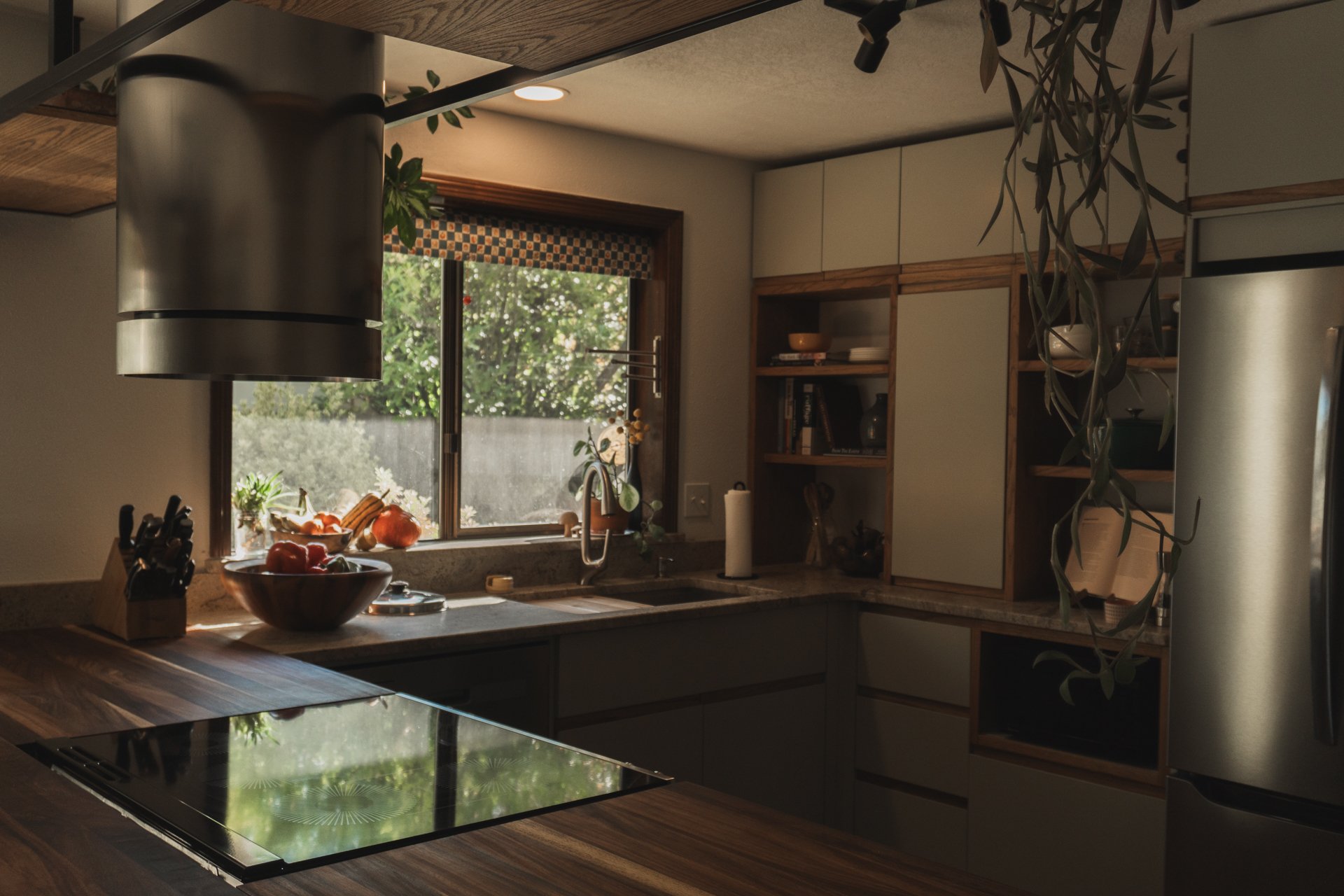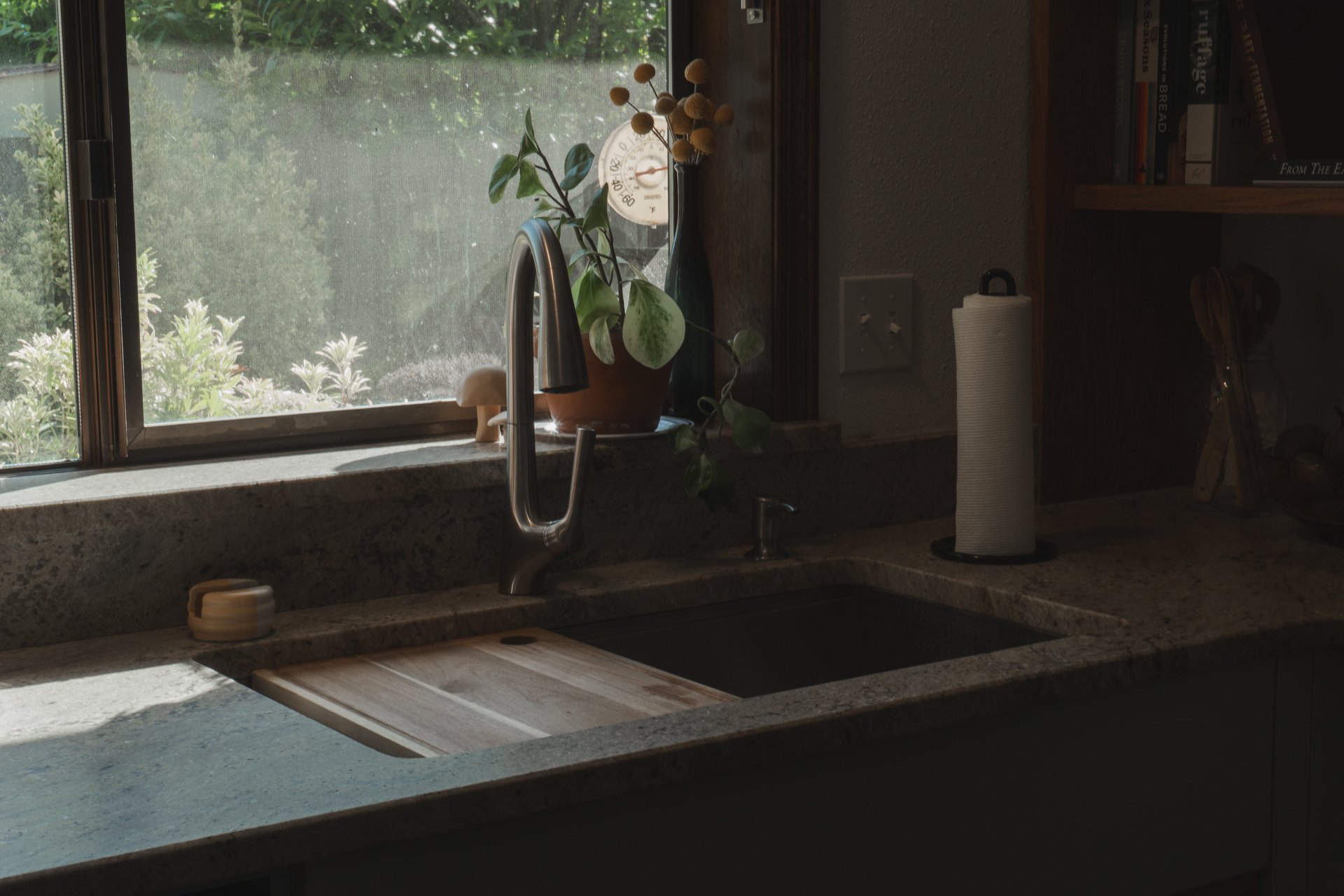Chanterelle Pasta
A cozy dish developed by two mushroom foragers, celebrating a successful hike’s vibrant yield.
Our team had the opportunity to join Hannah and Duncan in the preparation of their new kitchen’s first dish and it was delicious. It was also an adventure – before the cooking began, we ventured to the forest to search for the recipe’s star ingredient: chanterelle mushrooms. Hannah led us swiftly through her and Duncan’s favorite foraging route in the dense forest near Mary's Peak in Philomath, Oregon. She skillfully located and identified a variety of fungi for her newbie foraging students (Obra Fam). Every few steps we gathered around a new discovery to learn about the organism’s structure, characteristics and environmental significance. Before the twilight gently wrapped our hike, our group had traversed several fallen trees, photographed Hannah and Duncan’s favorite vista and most importantly, foraged an Obra tote bag full of chanterelles!
**Friendly reminder to forage with caution and be sure to reference credible sources on the edible and inedible wonders of nature**
-
3-4 pats of butter
1-2 leeks, sliced
3-6 chanterelle mushrooms, chopped
2-3 cloves garlic, minced
12-16oz pasta
dry white wine (for deglazing)
crushed red pepper
parmesan cheese, grated
salt & pepper to taste
fresh squeezed lemon juice
Optional: green herb garnish (parsley, chives, etc.)
-
Heat a stainless steel skillet. Add butter, then leeks. Cook over medium to medium-high heat, stirring occasionally until softened and slightly browned. Add a splash of dry white wine and cover for 5-8 minutes until caramelized, stirring occasionally.
Add chanterelles and a pinch of salt, stirring to coat. Cover for 7-10 minutes, stirring occasionally until most liquid evaporates. Add another pat of butter and stir in the garlic.
Add pasta to boiling salted water and cook according to package directions. Reserve about 1 cup of pasta water before draining.
Deglaze the skillet with more wine, stirring in crushed red pepper. Taste and adjust seasonings, deglazing with more wine if needed. Remove a portion of the mushrooms for topping.
Drain the cooked pasta and add it to the skillet with the sauce. Add reserved pasta water as needed to create a sauce that coats the pasta.
Serve immediately, topped with reserved chanterelles, grated parmesan, and any fresh herbs you have on hand.
We learned a bit from our horticultural-scientist clients: Chanterelles are obligate, they require a host. They cannot just grow on compost like many farmed woods. The mycelium and the roots have a mutually beneficial relationship (fungi gets sugars, trees get water nutrients) and they spore during optimal times of year for both parties, generally spring and fall. Additionally, they were kind enough to type up some more information on the topic that you may find interesting:
Chanterelles are found in our part of Oregon in the early fall, but they can be found around the world and anywhere from summer to fall depending on the region. They are a highly prized edible - delicious, fragrant and beautiful.
It’s important to be a good steward of any item you forage - that means taking only what you need, not over picking a certain area so others can enjoy, and being respectful of your fellow foragers. In Oregon, we have foraging limits for individuals to 1 gallon per person per day. Though that will vary state to state and country to country.
With most edible mushrooms, using them fresh is best. Don’t expect to store them in the fridge longer than 2-5 days. The best way to store cooked chanterelles is to sauté and then freeze them. When collecting, often there’s bits of forest floor associated with them - it’s easiest to cut or brush off, rather than rinse too much with water. Washing can add too much to water making them difficult to cook down.
Chanterelles are described as “sweet and earthy and a bit like apricots”. They’re very unique- as Duncan says, chanterelles smell like chanterelles. We like to prepare them in a way that enhances their natural flavor - like we did with our bright white wine, lemon and chili flakes. But they can be just as enjoyable in a hearty chanterelle and herb risotto. Sautéed in butter is hard to beat. If you have an abundance of mushrooms, add more to your dish - the stalks are edible too if they aren’t too woody. You can compost your bits.
Chanterelles are pretty distinct which makes them easy to identify. The ones we harvest are orange, though there are pinkish and white chanterelles too. But the orange ones we find can be confused for some other fungi. Chanterelles have gill-like folds, but not true gills; they look a bit like wrinkles and often have horizontal veins too. When in doubt, ask a local mushroom hunter or bring a guide book with you. They should be quite obvious but everyone should feel confident in their identification before eating. Duncan and I like to check each other’s work, so to speak. We consult each other to make sure we agree on our identification.
Project Búho
Hannah and Duncan’s custom kitchen and beverage center was inspired by nature and designed specifically to elevate their unique home rituals. Click below to visit the Project Búho page to learn and see more.



















